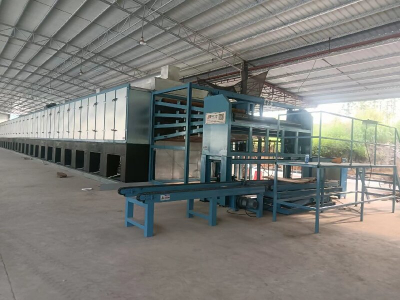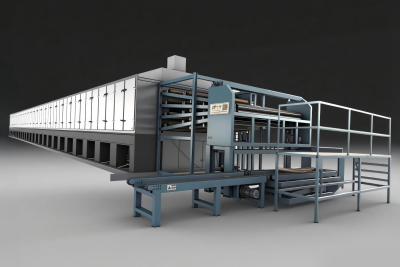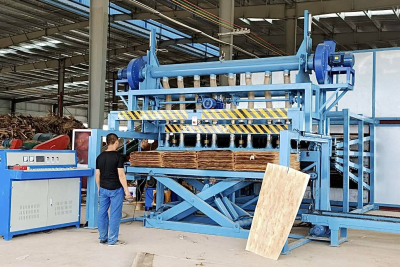What is Veneer vs Plywood?
Introduction: Let’s Talk Wood, Not Boring Stuff
We get it. When someone says veneer or plywood, your mind probably jumps to “just wood panels.” But trust us, there’s a lot more behind those smooth sheets and sturdy boards than meets the eye.
At Shine Machinery, we’ve spent years crafting, drying, and perfecting wood materials for furniture makers across the globe. We know every crack, curl, and moisture drop in a veneer sheet. And today, we’re breaking down one of the biggest questions in woodworking:
What is Veneer vs Plywood?
Let’s peel back the layers—literally.
1. What Exactly Is Veneer?
A veneer is a thin slice of real wood. It’s usually less than 1mm thick and glued onto another surface—often plywood, MDF, or particleboard.
Think of it as a cosmetic layer with real character. You get that natural wood grain and warmth without paying for a full chunk of solid timber.
During the veneer production process, logs are sliced or peeled into thin veneer wood sheets. These sheets then go through drying, pressing, and finishing. The result? Gorgeous, flexible panels that make furniture look expensive, but without the heavy price tag.
We love veneer because it’s efficient. One log can produce dozens of square meters of surface wood—less waste, more beauty.
2. What Is Plywood?
Plywood is basically a stack of wood veneers glued together. But here’s the trick—each layer (called a ply) is rotated at a 90° angle from the previous one.
That crisscross pattern gives plywood its strength and stability. It doesn’t warp or split easily, even under pressure or moisture.
There are several plywood board types:
· Softwood plywood (used in construction)
· Hardwood plywood (used in furniture)
· Marine plywood (resists water like a pro)
· Laminated plywood (adds extra shine and resistance)
The plywood manufacturing process starts with peeling veneer, drying it, gluing the layers, and then pressing under heat. Simple, right? Well, almost—if you’ve got the right equipment.
3. Veneer vs Plywood: The Core Difference
Here’s where most people get confused.
Veneer = a surface finish.
Plywood = a structural board.
When you buy veneer vs plywood furniture, you’re choosing between appearance and structure. Veneer furniture looks luxurious with real wood texture. Plywood furniture is tough, reliable, and long-lasting. Veneer wins for elegance. Plywood wins for endurance. Together, they make magic.
4. Solid Wood vs Veneer vs Plywood: Who Wins the Battle?
Here’s the truth: solid wood looks timeless, but it’s heavy, pricey, and sensitive to humidity. Plywood stays stable and strong. Veneer keeps things stylish on a budget.
Let’s say you want a dining table.
· Solid wood? Stunning but expensive.
· Plywood? Tough and practical.
· Veneer on plywood? The best of both worlds.
We’ve worked with all three, and trust us—using veneer over plywood gives you that solid-wood beauty without the headaches.
5. Behind the Scenes: The Drying Process That Changes Everything
(Keywords: veneer drying process, Plywood Dryer, plywood dryer machine, veneer dryer for plywood production, moisture content in plywood, veneer moisture control, high efficiency plywood dryer, wood drying equipment, veneer sheet drying machine, energy saving veneer dryer, plywood production line)
Now, here’s where we roll up our sleeves. You can’t talk about plywood production without mentioning drying. Drying is the heart of the process. If veneer isn’t dried properly, moisture content in plywood can ruin everything—warping, delamination, mold—you name it.
That’s why we built our Plywood Dryer technology. It keeps every sheet perfectly balanced. Our high efficiency plywood dryer and veneer sheet drying machine regulate veneer moisture control down to precise levels.
We’re not just blowing hot air. Our energy saving veneer dryer uses smart heat recovery systems that cut power waste by up to 30%.
When you see a flawless plywood board, it’s not luck—it’s controlled drying. Each layer moves through the plywood production line in harmony, ensuring strength and consistency. Without that perfect drying curve, even the best glue won’t save your board.
6. Plywood vs MDF vs Veneer: The Real Material Face-Off
(Keyword: plywood vs MDF vs veneer)
We often hear, “Why not use MDF instead?” Sure, MDF is smooth and cheap, but it’s not strong. It can swell when wet and sag under pressure.
Plywood beats MDF in structure and stability. Veneer beats MDF in natural aesthetics. If you want furniture that lasts years, not months, plywood with a veneer finish is unbeatable.
7. Furniture Material Comparison: Choosing What Fits You Best
(Keywords: furniture material comparison, advantages of plywood, disadvantages of veneer, best wood material for furniture, durability of plywood and veneer)
So how do you choose between all these materials? Here’s our quick guide:
Advantages of Plywood:
· Excellent strength-to-weight ratio
· Resists cracking and warping
· Works well in humid climates
Disadvantages of Veneer:
· Can peel if glued poorly
· Needs extra care while cleaning
· Not ideal for heavy load surfaces
Best wood material for furniture?
If you love beauty and durability, go with veneer on plywood. You’ll get the durability of plywood and veneer’s natural charm in one smooth combo. We’ve seen it in action—customers love the feel of real wood veneer, but appreciate the solid core that plywood provides.
8. Our Passion for Perfect Panels
We’ve been in this business long enough to know—perfection comes from details. Every veneer dryer for plywood production we build is part of that obsession with quality. When you sit at a desk or open a cabinet made from our materials, we want you to feel that craftsmanship. The warmth of real wood, the stability of engineered structure, and the invisible science of drying working behind the scenes.
It’s not just equipment to us—it’s art meeting engineering.
Veneer is beauty.
Plywood is strength.
And drying—well, that’s where real performance begins.
When you combine the three, you get furniture that feels luxurious, lasts for decades, and respects the planet. That’s what we believe at Shine Machinery. We don’t just build machines—we build the backbone of beautiful furniture.







